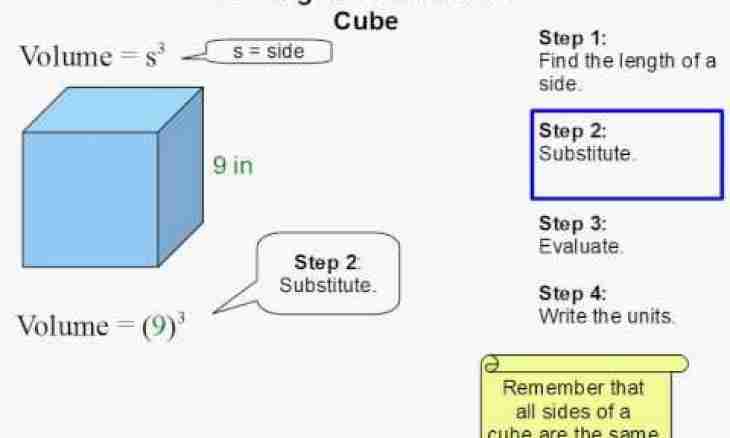It is much more distance between particles of gaseous substance, than in liquids or solid bodies. These distances also strongly exceed also the sizes of molecules. Therefore the volume of gas is defined not by the size of its molecules, but space between them.
Avogadro's law
The remoteness of molecules of gaseous substance from each other depends on external conditions: pressure and temperatures. Under identical external conditions the intervals between molecules of various gases are identical. Avogadro's law opened in 1811 says: equal volumes of different gases under identical external conditions (temperature and pressure) contain identical number of molecules. I.e. if V1=V2, T1=T2 and P1=P2, then N1=N2, where V – volume, T – temperature, P – pressure, N – number of molecules of gas (the 1 index at one gas, "2" – at another).
The first investigation from Avogadro's law, molar volume
In the first investigation from Avogadro's law it is claimed that the identical number of molecules of any gases under the same conditions occupies identical volume: V1=V2 at N1=N2, T1=T2 and P1=P2. The volume of one of any gas (molar volume) – a constant. Let's remind that 1 pier contains Avogadrovo number of particles – 6.02х10^23 molecules.
Thus, the molar volume of gas depends only on pressure and temperature. Usually consider gases with a normal pressure and normal temperature: 273 K (0 degrees Celsius) and 1 atm (760 mm Hg., 101325 Pas). Under such normal conditions designated "by N at.", the molar volume of any gas is equal to 22.4 l/mol. Knowing this size, it is possible to calculate the volume of any set weight and any set amount of gas.
The second investigation from Avogadro's law, relative density of gases
The second investigation from Avogadro's law is applied to calculation of relative density of gases. By definition, density of substance is the relation of its weight to its volume: ρ=m/V. For 1 mole of a substance weight is equal to the molar mass of M, and volume – to the molar volume of V (M). From here density of gas is ρ=M (gas) / V (M). Let there are two gases – X and Y. Their density and molar masses – ρ (X), ρ(Y), M (X), M (Y), connected among themselves by ratios: ρ (X) = M (X)/V (M), ρ(Y) = M (Y)/V (M). With a relative density of gas X on gas Y, designated as Dy(X) is called the relation of density of these gases ρ (X)/ρ(Y): Dy (the X)=ρ (X)/ρ(Y) = the M (X) xV (M)/V (M) xM(Y) = M (X)/M (Y). Molar volumes are reduced, and from this it is possible to draw a conclusion that the relative density of gas X on gas Y is equal to the relation of their molar or relative molecular masses (in number they are equal). Density of gases quite often define in relation to hydrogen, the easiest of all gases which molar mass – 2 g/mol. I.e. if in a task it is told that unknown gas X has density on hydrogen, say, 15 (relative density – dimensionless size!), it is possible to find its molar weight: M (X) =15xM(H2) =15x2=30 g/mol. Often specify also relative density of gas by air. Here it is necessary to know that the average relative molecular mass of air is equal 29, and it is necessary to multiply already not by 2, and on 29.

